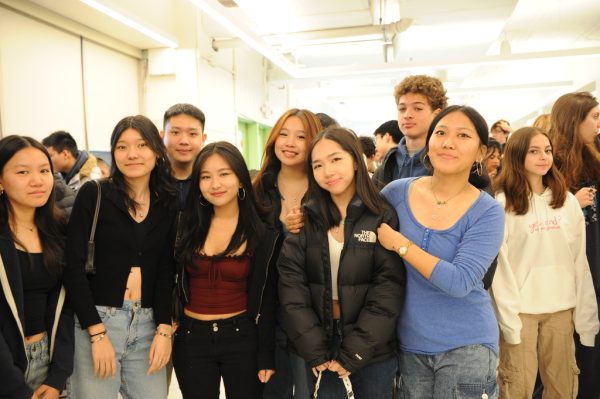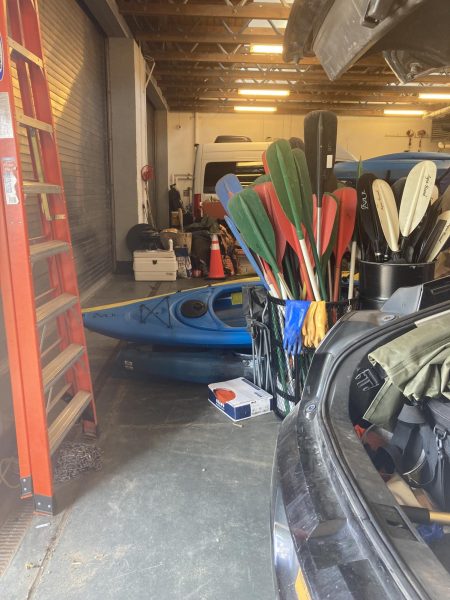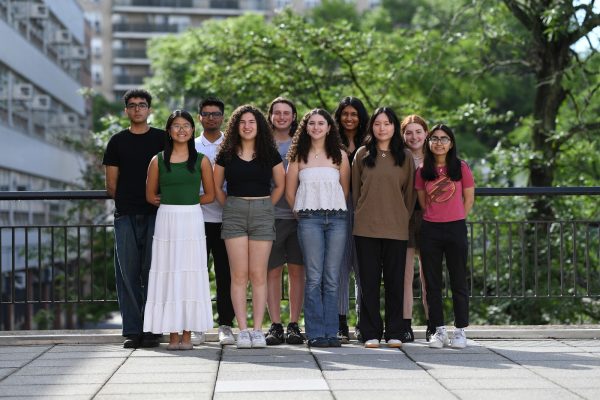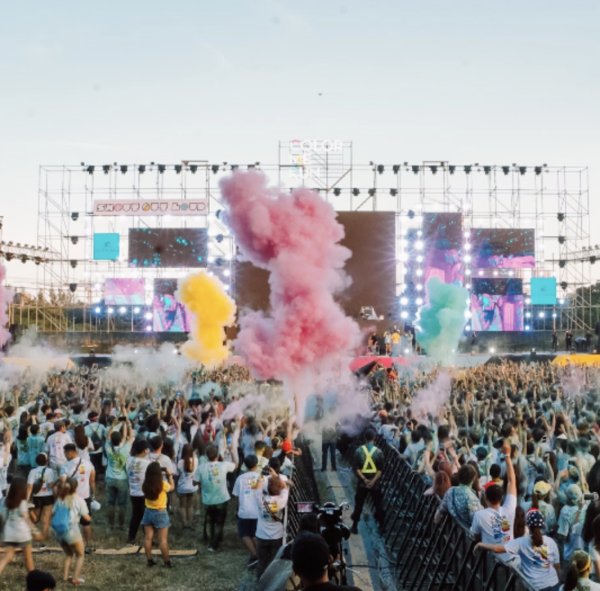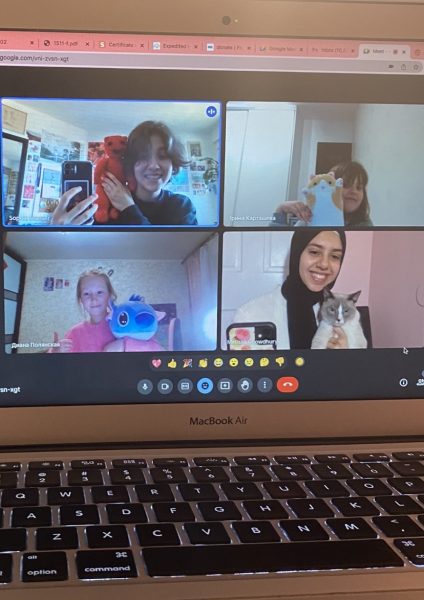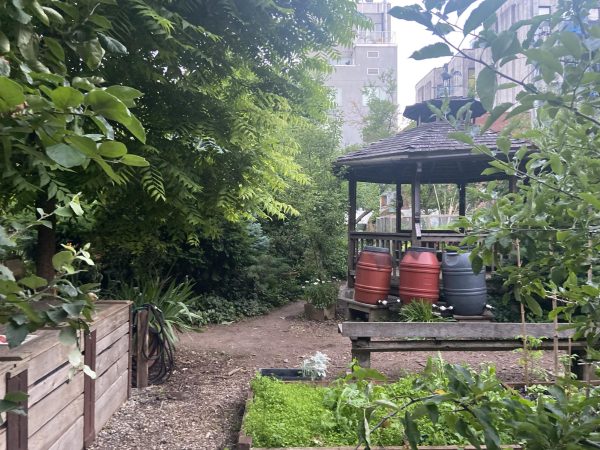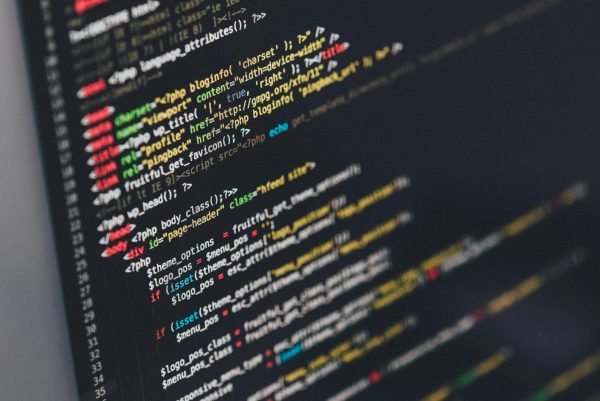Tips for Success With Remote Learning
Here are screenshots of ZOOM and Google Meet logos, which Bronx Science students see every day during the remote learning period of the Coronavirus pandemic. Every Bronx Science teacher is using one of the two platforms to conduct virtual classes.
Schools across America and the world are currently facing an unprecedented challenge due to the Coronavirus pandemic: remote learning. Before the Coronavirus pandemic arrived in early 2020, few people imagined that remote learning would become the new normal for the foreseeable future. All Bronx Science students have had at least several months’ experience with remote learning (from March 15th through June 26th, 2020, for the 2019-2020 academic year, and from September 21st until today for the current 2020-2021 academic year). Students who have chosen the blended learning model for the 2020-2021 had once a week in person classes this academic year, but four days a week of remote learning from home, and currently all NYC public school students are doing remote learning only, due to an increase in COVID-19 cases in New York City (schools will reopen once the weekly case rate goes down). Given all of our students’ experiences with remote learning, the majority of Bronx Science students are now confident in their ability to handle remote learning, which has become easier with time.
Students learn differently in particular classes, which means that they also have diverse ways on how to adapt to their classes now that they are fully remote. For Asuka Konda ’23, “Math class videos are what help me the most. I find that in a lot of STEM classes such as math or science, having live videos to watch during our asynchronous class periods really helps. You can follow them at your own pace which I found to be really helpful.” When it comes to her humanities classes, however, Konda prefers a different strategy: “I found that having slides and being able to write on them is the best. It also is a perk of remote learning that you get the materials that you need right away.”
At Bronx Science, each teacher is now required to provide 120 minutes of synchronous video class instruction each week, following NYC Department of Education protocols. With each teacher scheduling their classes separately, students now have irregular schedules: some students may have classes back to back, while others may have long stretches of free periods, which vary day by day. Although the schedules are unconventional, students have learned how to adapt to them. For Laura Pong ’22, “I usually have three synchronous classes a day, and usually each class is spaced out with an asynchronous period. I try to do as much work as possible before 4 p.m. My workload is definitely lighter than it would be during a normal school year. I’m way less stressed and get more sleep.” She continues, “I’m really glad that I’m able to eat lunch everyday uninterrupted without having to simultaneously study or do homework, but I definitely miss the social aspects of lunch, like talking with my friends or going out to Jay’s Truck to get food.”
Jessica Wang ’21 tries to tackle her coursework throughout the day so that she does not become overwhelmed. “I always finish all of the homework for social studies classes later on in the evening, so that I can concentrate more time right after the virtual school day ends at 2:57 p.m. for math, debate, college apps, and clubs, when those virtual meetings start after school. When I have asynchronous class days, I tend to catch up on everything, so I find those days to be really helpful.” Wang also thinks that it is also important to cultivate good time management skills. “Things like setting alarm clocks to mirror the bells in school helps me to bring structure to my life, since I am attending school from home now,” Wang said.
One of the biggest challenges facing students, parents, and teachers alike, the world over, is keeping students motivated throughout this unconventional academic year without students physically attending school and learning from home remotely. “It is not easy to stay motivated in online classes. I would say that my main extracurricular, debate, really keeps me upbeat,” Asuka Konda said. Laura Pong tries to stay motivated by giving herself scheduled breaks throughout the day. “Between class periods, I always get up and walk around my apartment, which is so much better than running from the third floor to the basement to get to class on time when I am physically at Bronx Science. I really need to get up and move between my video classes, because if I’m just on Zoom all day, I feel super unmotivated to do anything,” Pong noted.
Another new issue to tackle is the student’s home environment. Jessica Wang mentions how she struggles to find a quiet space at home for her online classes: “I live with my grandparents, so even though my parents go to work every day, there are still a lot of people around me, when I add my brothers to the mix. It’s hard to concentrate when you have so many distractions. It can be noisy as well when I need to speak on video during a Zoom class. Generally, I don’t think there’s much that I can do about that, since we all live together, so I can only ask my family members to be quiet,” Wang said. Laura Pong also struggles with her environment and believes that it decreases her motivation: “It’s sometimes hard to stay focused on days during which I’m really tired, because my bed is literally right behind my desk, and I can lay down at any time if I wish to, but keeping snacks and water nearby helps me a lot to stay at my desk, working.”
On the other hand, it is a different story for Asuka Konda. “I would say that staying at home has impacted me positively. I have been able to spend more time with my friends and family, and I have made sure that I am staying on top of my course work. Honestly, calling my friends has been the best part of my day. The fact that your friends are just within reach through a text or a Facetime visit is something that I will miss when we go back to school in person,” Konda said.
As Bronx Science students adapt to their new reality of remote learning, they also have access to different electronic devices that will help them during the year. Many electronics, such as laptops, computers, and tablets have really come in handy. “Paper notebooks are not nearly as versatile as electronic devices like laptops. I hope that the NYC Department of Education will continue to allow us to use iPads to take notes when we go back to school. My notes are all in one place which is convenient during open book exams. A laptop is a must, however, in addition to using an iPad. I feel like you cannot rely solely on one device. I have already had technical issues where I need to switch to another device,” said Laura Pong.
For Laura Pong, something that helps her the most is food. For her, “Snacking throughout the day really helps me to stay at my desk and remain motivated. It definitely makes sitting at my desk all day more enjoyable, and it gives me energy in the morning when I roll out of bed to attend my first period Zoom class. I would definitely recommend it for students who are super tired throughout the day, or for students who need a reason to stay at their desk.”
Although remote learning poses many challenges for the Bronx Science community and for schools around the world, students are still trying their best to learn remotely.
“I would say that staying at home has impacted me positively. I have been able to spend more time with my friends and family, and I have made sure that I am staying on top of my course work,” said Asuka Konda ’23.
Angela Phuong is a Managing Editor/Advisory Editor for 'The Science Survey.' She enjoys journalistic writing because she can keep others updated on current...


